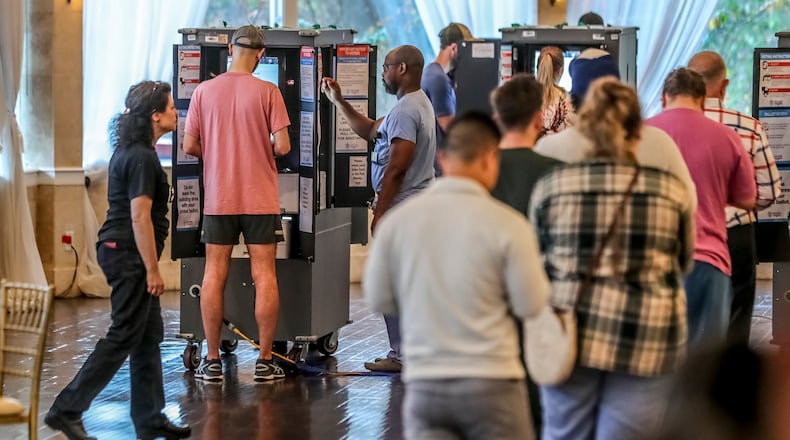Record turnout for early voting gave way to a middling Election Day in Georgia, with the overall number of ballots cast matching the last midterms four years ago.
Turnout fell short of expectations by election officials and political scientists who predicted 2 million Election Day voters.
Instead, about 1.4 million voters showed up on Tuesday, bringing total turnout to 3.95 million.
Most people cast their ballots during three weeks of early voting, and there was no tide of last-day participation at precincts on Tuesday. Going into Election Day, 2.5 million people had already voted.
“The whole point of having pre-Election Day voting is to take pressure off Election Day,” interim Deputy Secretary of State Gabriel Sterling said. “Negative campaigns tend to depress turnout. And I think all of us who live in this state might have seen a handful of negative ads, especially around the Senate race.”
Though turnout came in below forecasts, it was still strong and showed that Georgia’s voting system can handle the load without creating long lines, Sterling said. The number of voters on Tuesday was lower than the 1.8 million Election Day voters seen in 2018 but higher than the nearly 1 million voters in 2020, when more people cast early and absentee ballots during the peak of the coronavirus pandemic.
While total turnout was the same as in 2018, the turnout rate declined because there are 900,000 more registered voters in Georgia than four years ago. In all, 7.8 million people are currently registered to vote.
About 51% of registered voters cast ballots in this year’s midterms, compared with 57% in 2018, according to state election data. In the 2020 presidential election, 5 million voters participated for a 65% turnout.
“We’re used to ever-increasing voter turnout in the last three federal elections,” said Bernard Fraga, an Emory University political science professor who studies registration trends. “2018 was a very high bar, with record voter turnout. Even getting close to the 2018 turnout in Georgia would still be extremely high by historic standards and implies high voter enthusiasm.”
In the U.S. Senate race, Democratic U.S. Sen. Raphael Warnock received about 54% of the early vote, and Republican Herschel Walker won 56% of the Election Day vote.
In their upcoming runoff, turnout will likely be lower. Fewer voters show up for the rematch than the original event, and early voting is only required for one week before Election Day on Dec. 6 instead of the three weeks offered before the general election.
During the runoffs for the U.S. Senate following the 2020 election, turnout declined from the presidential election by about 500,000, to 4.5 million.
About the Author
Keep Reading
The Latest
Featured




